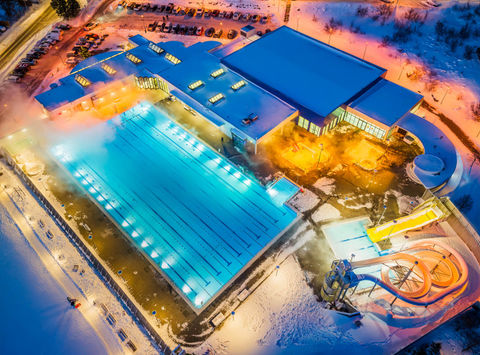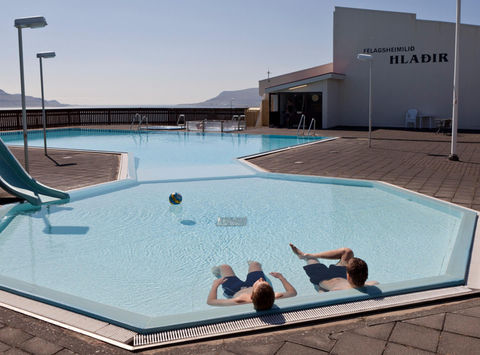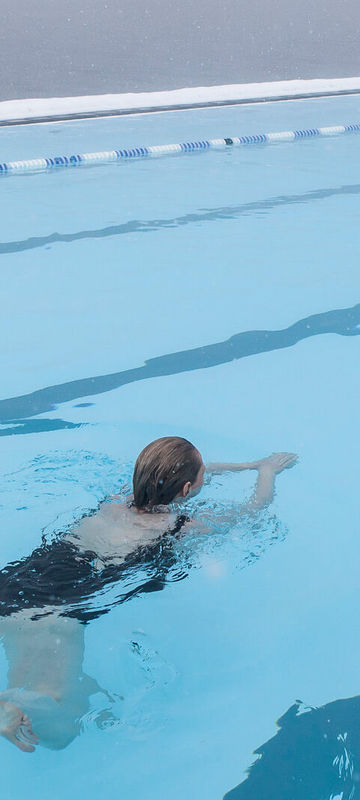Since it opened in 1992, the Blue Lagoon has become one of the leading visitor attractions in Iceland. Understandably. It’s an iconic experience that combines the elemental pleasure of bathing in naturally heated water with a striking geographic location – it covers an area of 400,000m² in the heart of the Reykjanes UNESCO Global Geopark. Milky blue geothermal pools are surrounded by black volcanic rock covered in a green moss (and snow in winter), which exemplify Iceland’s unique geology. That the Blue Lagoon is harnessing run of water from a local power plant also speaks of Icelandic ingenuity.
Yet, bathing culture runs far deeper in Iceland’s national psyche than the glamour of the Blue Lagoon and similar geothermal spas. Swimming pools, or Sundlaugar as they are called in Icelandic, are an inherent part of local life. With over 120 of them dotted across the island – a country of around 380,000 – they form a central hub for just about every community in Iceland.
As Clive Stacey, Discover the World’s MD comments, “visitors may not realise how interesting and different the multitude of public outdoor swimming pools are. A place to meet the locals and get a genuinely different perspective of the country”. When more and more, travellers are looking for immersive experiences offering an authentic glimpse of local life, who’d have thought that a trip to the humble local pool could be the place to start.

Such is the significance of Sundlaugar in everyday life in Iceland that “swimming pool culture” has been nominated for World Heritage status under the UNESCO Intangible Cultural Heritage list. Reflecting traditional and contemporary practices in which diverse cultural groups participate such as performing arts, rituals and traditional craftsmanship, the list features specifics such as the “culture of baguette bread” in France as well as “sauna culture” in Finland. For swimming pool culture to be included speaks to its central role in everyday Icelandic life.
So, why are swimming pools in Iceland so popular?
Firstly, there is the obvious fitness boon of regular cardio exercise. Yet wellness benefits extend beyond simple exercise with hot/cold treatments also popular – combining cold water plunges with warm water recovery. Beyond the physical effects, there is also a core social element, whereby locals from all walks of life come together in one place without ceremony or hierarchy. On any given day, you might find the major chatting to the milkman. Full-stack developers chatting with farmers.

Many of the pools in Iceland harness geothermally heated water, but geothermal energy is not universal around the country. That isn’t a barrier to bathing though. In areas where naturally heated water sources aren’t available, swimming pools are heated with hydroelectric power.
Iceland is not known for its balmy climate. The clue is in the name after all. Yet the best swimming experiences are in outdoor pools. And far from being a summer activity, much of the appeal comes from diving into warm water on a bracing winter’s day.
The other thing about Iceland’s swimming pools is that you don’t pay much for entrance fees. Average entry fees are under £10. Of course, they are more basic than the carefully cultivated spas and lagoons around the country, which tend to focus on a holistic wellbeing experience, but they offer an authentic slice of Icelandic life.
Take a peak at some of the Iceland’s most scenic pools.
Feeling inspired?
If you’d like to dip into Icelandic swimming pool or bathing culture on your holiday, get in touch with our Iceland specialists or browse our collection of independent self drives holidays or let us tailor make something just for you.
Get in touch on 01737 214 250 or you can send an enquiry.
























